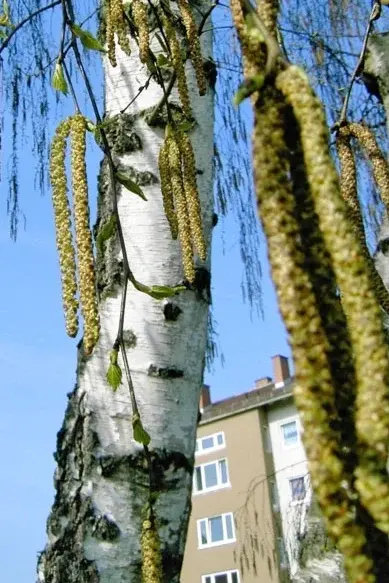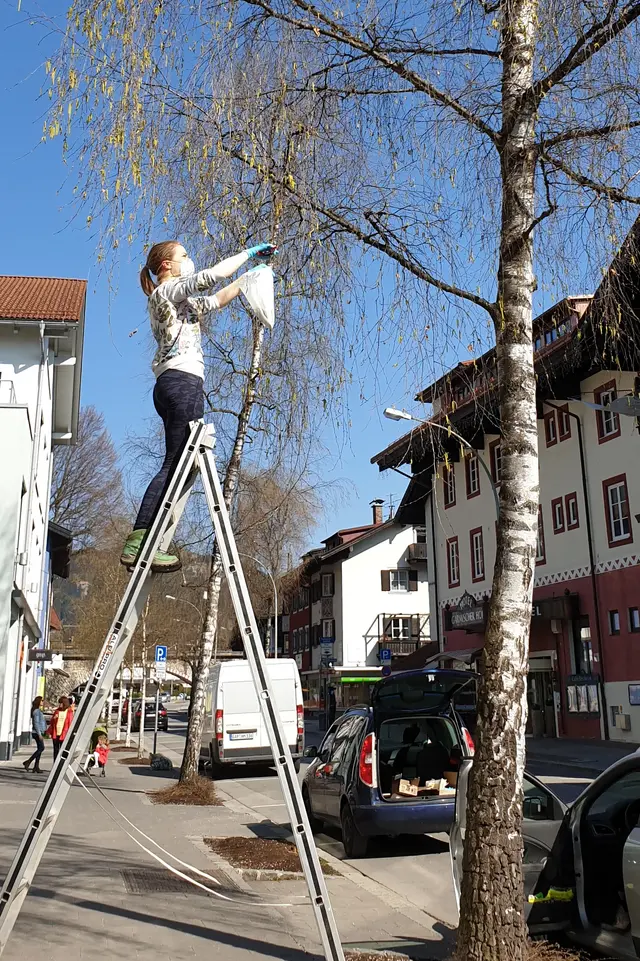Jochner-Oette holds the Professorship of Physical Geography / Landscape Ecology and Sustainable Ecosystem Development at the KU and has been conducting research on the influence of climate change on pollination for many years. She says: "Climate change not only affects the start and duration of the pollen season, but for some plants, it also affects the amount of pollen and its allergenicity. Pollutants could additionally influence the allergenic potential. For example, we found in a previous project that the allergenicity of birch pollen is increased at sites with high ozone levels." About 15 percent of the population in Germany is affected by allergies, which are not only annoying but can also be life-threatening, she said. In order for those affected to better adapt to the possible consequences of climate change, detailed knowledge of the interplay of the various influencing factors is therefore required.
Pollen in urban climates: Researchers aim to improve predictions for people with allergies

This is because the climatic conditions in cities are already different from those in the countryside and thus have an influence on urban vegetation and the formation of pollen. And urban structures also affect air currents, inhibiting or promoting pollen dispersal and deposition: Tall buildings and complex surfaces can increase air turbulence, causing pollen concentrations to vary widely between neighborhoods, both vertically and horizontally. Therefore, a special model for urban climate will be used for the first time in the project to simulate the distribution of pollen in the study area and to compare it with actually measured concentrations. To this end, the project team will install a measurement network in Ingolstadt that registers pollen concentrations at a variety of different locations, both at street level and with rooftop-mounted instruments. Using Lycopodium spores, a preliminary study has already successfully tested the potential of this approach and the chosen climate model. "We were able to show that the main dispersion patterns are well reproduced by the simulation", explains Professor Jochner-Oette.

Together with her team, she wants to describe the intensity of the pollen season in an innovative way. This is because two parameters in particular have been recorded so far: The actual state of pollen concentration by air sampling as a snapshot as well as the initial amount of pollen in the closed flowers. But how much of it is actually released by the plants at which point in time, or how much pollen is still in the flower as "ammunition" at different stages – this aspect has hardly been taken into account so far. "The ongoing determination of emission rates is a novel approach to determine daily pollen release", Professor Jochner-Oette emphasizes. Therefore, throughout the pollen season, the remaining pollen content is continuously quantified on selected birch trees in the urban area of Ingolstadt. This is important as a basis of data, so that in turn the distribution of pollen – together with data on weather and pollen concentration in the air – can be predicted more accurately than before.
Citizens themselves can also contribute to this project: Via the already established portal "BAYSICS" (www.baysics.de) and an associated app, those suffering from pollen allergy can provide information on their symptoms, which can again be set in relation to the collected measurement data. "The project will also aim to develop a risk map that will take into account not only the distribution of birch pollen but also the influence of pollutants and thermal comfort in the urban environment", describes Professor Jochner-Oette. "That's because high temperatures, as well as pollution, have a big impact on our health – especially for those suffering from allergies."
![[Translate to Englisch:] Bereits jetzt nutzen die Forschenden auf dem Dach der Wirtschaftswissenschaftlichen Fakultät Ingolstadt der KU eine Pollenfalle, um kontinuierlich den Pollenflug im städtischen Gebiet zu erforschen. Im Zuge des Projektes werden weitere Messstellen entstehen – sowohl auf Dächern als auch auf Niveau der Straßen. (Foto: Dominik Köth/upd)](/fileadmin/_processed_/2/8/csm_Pollenfalle_9d2c7075a3.webp)